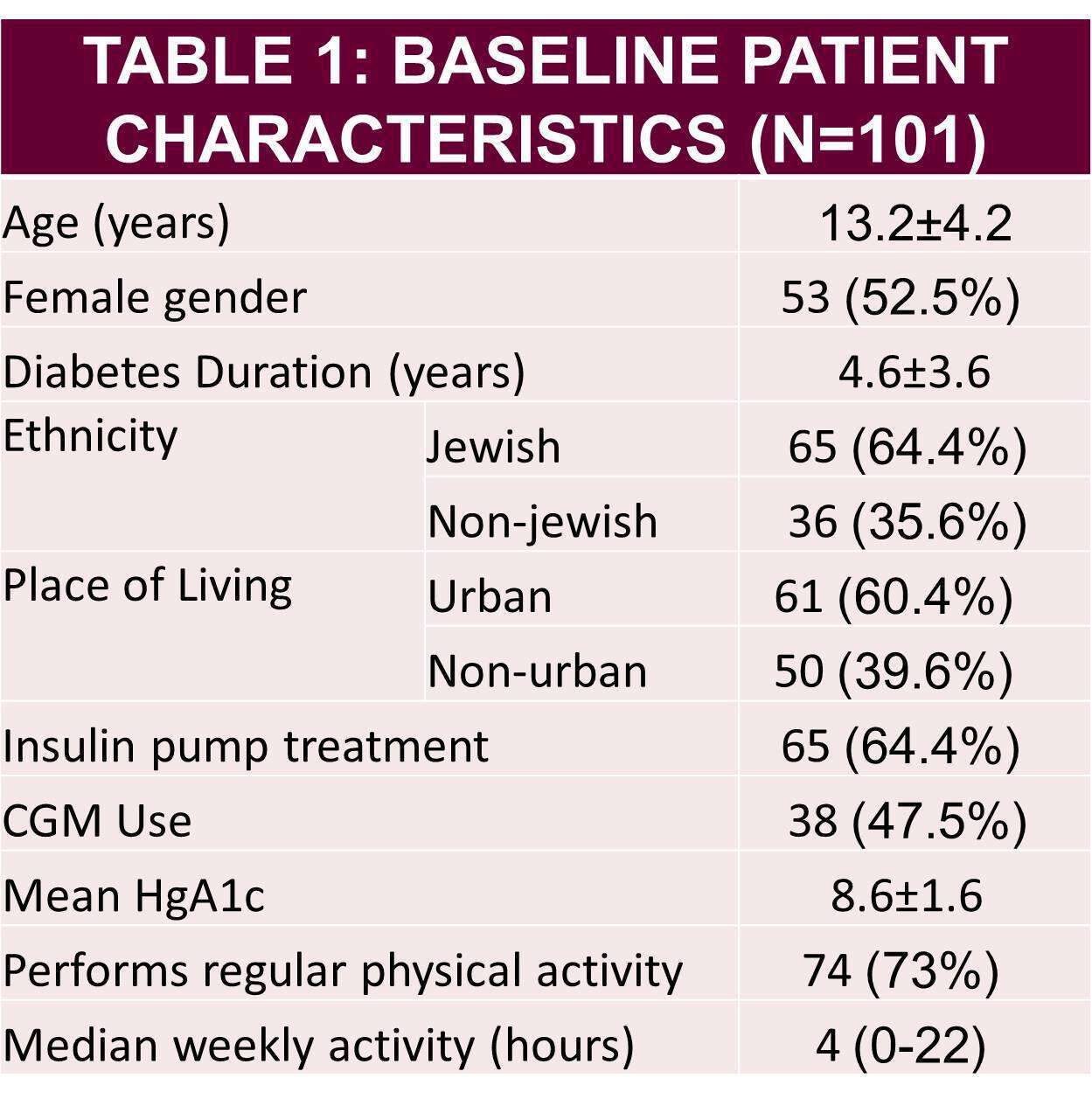Background: The advantages of physical activity are particularly emphasized in children with type-1-diabetes. However, these children perform less than the recommended daily activity. To increase participation in physical activity, recognizing barriers and sources of support is crucial. Only few studies have addressed this topic.
Aims: To identify barriers and sources of support for exercise in children with type-1-diabetes and to evaluate the education received.
Methods: A cross sectional, questionnaire-based study. Patients with type-1-diabetes 2-20 years of age, were recruited while attending a routine visit to our diabetes clinic. The questionnaire assessed variables such as barriers to physical activity, social and family support.
Results: 101 patients with type-1-diabetes were included in this study. Mean age 13.2±4.2 years, 53 females. Median weekly time of physical activity was 4 hours, and only 28% performed at least 7 hours weekly. The most prevalent barrier was risk of hypoglycemia. Family support scores were generally favorable. Social support scores were the highest for exercising together and this variable correlated with the amount of activity performed (cc=0.360,p<0.001). The majority of patients reported satisfaction with the guidance they received at the clinic. 75% reported adjusting their routine in order to control glucose during exercise, yet only 42% of participants responded correctly to the knowledge set of questions.
Conclusions: Children with type-1-diabetes are preforming less than the recommended daily physical activity. Hypoglycemia is perceived to be a major barrier and social support rises as an important factor encouraging activity. Further knowledge implementation and proper education of patients are required.



